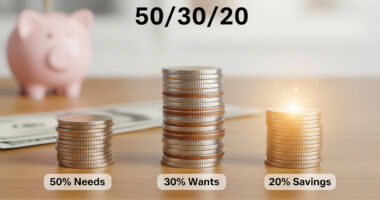When the goal is to preserve capital and ensure easy access to your money, low-risk investments seem like a foolproof strategy. However, even in this seemingly safe corner of the financial world, common missteps can erode your returns and compromise your financial goals. While they may not carry the volatility of the stock market, low-risk assets require their own brand of diligence. Here are five crucial mistakes to avoid when building your low-risk investment portfolio.
1. Ignoring Inflation
This is arguably the most significant pitfall. While a high-yield savings account or a CD might offer a seemingly good return, it’s essential to compare that rate against the current inflation rate. If your investment is yielding 3% but inflation is at 5%, your purchasing power is actually shrinking. Your “safe” investment is losing you money in real terms. Always aim for low-risk options that offer a return at or above the current inflation rate to ensure your money is truly growing over time.
2. Overlooking Liquidity
Liquidity refers to how quickly and easily you can convert an asset into cash without losing value. This is a primary concern for short-term investors. A common mistake is locking up funds in an investment with a high penalty for early withdrawal, such as a long-term CD, for a goal that might require flexible access. For an emergency fund, for example, a high-yield savings account is a far better choice than a CD, even if the latter offers a slightly higher rate. The potential penalty for early withdrawal could wipe out any interest gained.
3. Failing to Diversify
While low-risk assets are less volatile than stocks, they are not immune to all risks. Putting all your money into a single type of investment, even if it’s considered safe, can expose you to a specific type of risk. For example, a sudden drop in interest rates could negatively impact the returns of a money market fund. A well-diversified low-risk portfolio might include a combination of high-yield savings accounts, a ladder of CDs with varying maturity dates, and short-term government bond funds. This strategy ensures that if one asset class underperforms, your entire portfolio isn’t affected.
4. Chasing the Highest Yield Without Due Diligence
The internet is full of “best of” lists for high-yield savings accounts and CDs. While these can be helpful, blindly chasing the highest advertised rate is a mistake. Always read the fine print. Some accounts might have hidden fees, require a high minimum balance, or have a tiered rate structure where the highest rate only applies to a small portion of your balance. Others might be from lesser-known, non-FDIC-insured institutions. Stick to reputable, FDIC-insured (or NCUA-insured for credit unions) banks and make sure you understand all the terms before committing your funds.
5. Forgetting to Rebalance and Review
Financial markets and your personal circumstances are dynamic. The best low-risk investment for you today may not be the best one a year from now. Failing to regularly review and rebalance your portfolio is a significant error. Interest rates change, new investment products emerge, and your own financial goals may shift. Set a calendar reminder to check your investments at least once a year. This simple habit ensures your portfolio remains aligned with your objectives and is taking advantage of the best available options.
By avoiding these five common mistakes, you can build a low-risk investment portfolio that is truly safe, efficient, and capable of helping you achieve your short-term financial goals without unnecessary stress or loss of capital.









